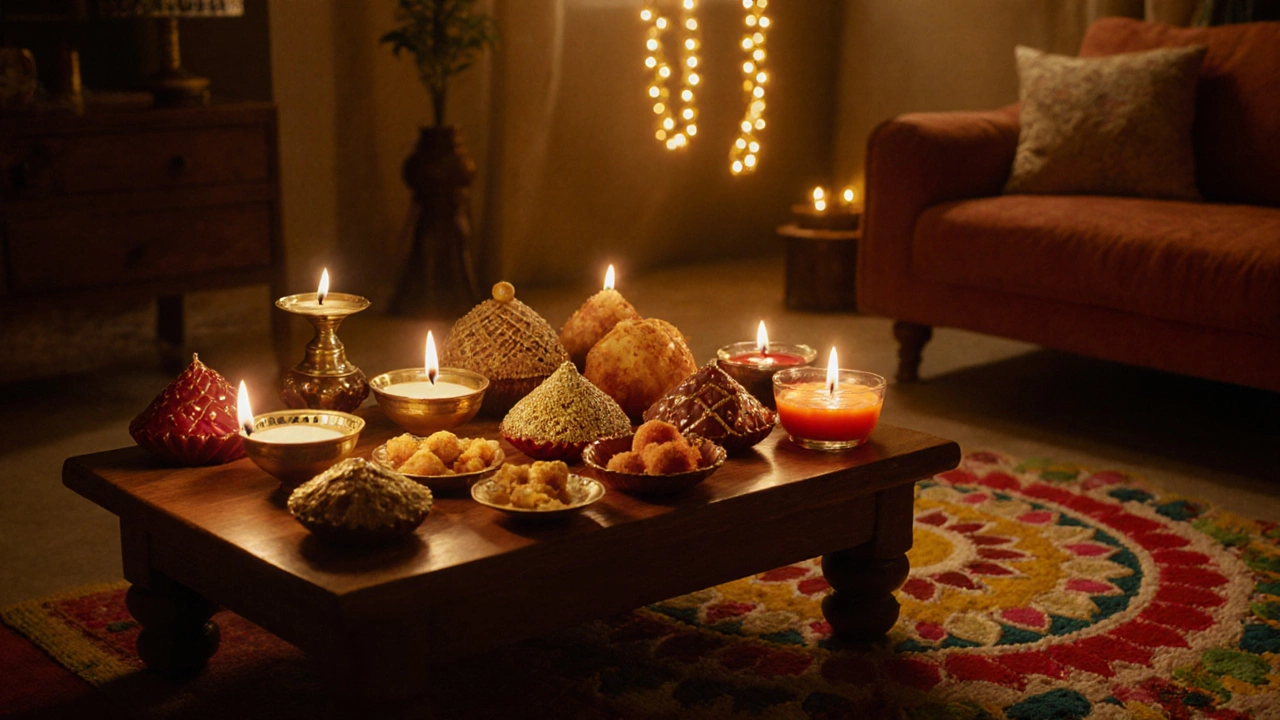
Why are sweets given during Diwali? Meaning and Traditions Explained
Discover the cultural and religious reasons behind gifting sweets on Diwali, explore regional treats, and learn tips for sharing the perfect festive sweets.
When you think of sweets and festivals, the deep connection between celebratory food and cultural rituals in Tamil communities. Also known as festive confections, these treats aren’t just desserts—they’re offerings, blessings, and memories wrapped in jaggery and coconut. In Tamil Nadu, a festival without sweets feels incomplete. Whether it’s Diwali lights flickering in homes or the oil lamps of Karthigai Deepam glowing along temple streets, every celebration has its own signature sweet. These aren’t bought from stores; they’re made in kitchens passed down through generations, each recipe tied to a story, a deity, or a season.
The Tamil festivals, religious and seasonal events rooted in agrarian cycles and devotional practices. Also known as Tamil religious observances, it includes Pongal, Deepavali, and Navaratri—each with its own sweet identity. Pongal brings sakkarai pongal, a warm dish of rice, lentils, and jaggery offered to the sun god. Diwali means murukku, adhirasam, and laddu piled high on banana leaves. Karthigai Deepam calls for sweet pongal and coconut-based treats. These aren’t random snacks—they’re coded in meaning. Jaggery stands for sweetness in life, coconut for purity, and rice for abundance. The act of sharing them isn’t just generosity; it’s a prayer made edible.
What makes these sweets different from regular desserts? They’re tied to time, not taste. A grandmother doesn’t make adhirasam in June—it’s made when the temple bells ring for Navaratri. The oil used in frying is often ghee from the family’s own cow. The jaggery comes from the same sugarcane harvested after the monsoon. This isn’t tradition for show—it’s tradition as rhythm. You don’t just eat these sweets; you feel the pulse of the community in every bite.
And it’s not just about the food. The way sweets are prepared, shared, and even discarded carries meaning. Leftovers are never thrown away—they’re given to neighbors, temple workers, or the poor. A plate of payasam left at a temple step isn’t waste; it’s an offering. Even the wrappers matter: banana leaves aren’t just eco-friendly—they’re sacred vessels, believed to carry blessings.
What you’ll find in the posts below are real stories from Tamil homes—how a simple sweet became the center of a family’s Diwali, why a mother refuses to use sugar instead of jaggery, and how a child’s first taste of adhirasam became a rite of passage. These aren’t recipes. They’re cultural anchors.

Discover the cultural and religious reasons behind gifting sweets on Diwali, explore regional treats, and learn tips for sharing the perfect festive sweets.